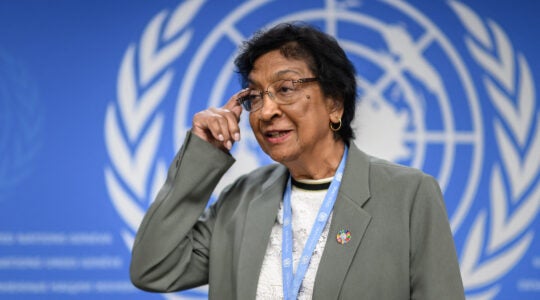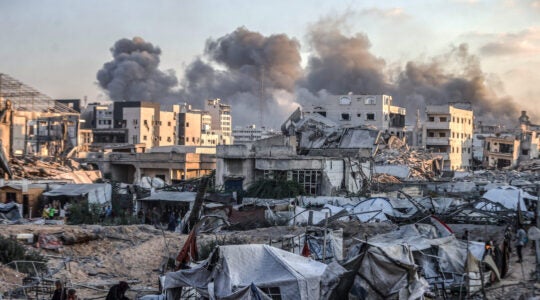TEL AVIV (JTA) — Every year hundreds of Jews — men and women together — and many of them from abroad, gather to pray at the southernmost edge of the Western Wall at an archaeological site called Robinson’s Arch. Until an agreement was reached between Israel’s Conservative movement and the government on Feb. 11, those worshipers often were charged a fee to pray.On the eve of a lawsuit by the movement against the government and other organizations involved in the Western Wall area, the government came up with a compromise plan in which worshipers would be able to hold free services until 10:30 in the morning on weekdays, and on Friday evenings and holidays. A situation “was created where someone who wanted to pray at the Western Wall as an Orthodox Jew could pray as frequently as they wanted and with no entry fee, and we were in situation where if someone wanted a mixed minyan, they would have to pay to pray,” said Rabbi Andy Sacks, director of the rabbinical assembly in Israel for the Masorti movement, the name of the Conservative stream in Israel. Sacks welcomed the compromise solution. “Ultimately what is important here is the recognition on the part of the government that those whose praying is not in keeping with Orthodox customs but their own customs have to be accommodated, and that the government must provide for their needs as well,” he said. The decision to have a legally sanctioned area for Jews who wanted to pray in mixed minyans, or quorums, at the Western Wall followed violent attacks on mixed groups praying with Torah scrolls in 1998 and 1999. The worshipers were pelted with stones and reportedly even feces-filled diapers by fervently Orthodox worshipers who were enraged at the sight of women and men praying together at the rear of the Western Wall plaza. At the time a deal was made that worshipers seeking to pray in egalitarian services would be allowed to do so at Robinson’s Arch, an archaeological site at the far southern edge of the Western Wall. About two years ago the archaeological park that oversees the site began charging worshipers who came to pray after 8 in the morning, claiming the groups were bothersome to tourists, according to Sacks.The arch itself was part of an entranceway that once led to the Second Temple. It traditionally has less emotional significance to the Jewish people than the Western Wall plaza area itself because much of it had been under the ground until excavations in the 1880s. About 200 groups a year, many of them affiliated with the Conservative movement abroad, pray at the site and are deeply moved by the setting, which includes original boulders that tumbled off the temple during its destruction in 70 C.E.
JTA has documented Jewish history in real-time for over a century. Keep our journalism strong by joining us in supporting independent, award-winning reporting.





